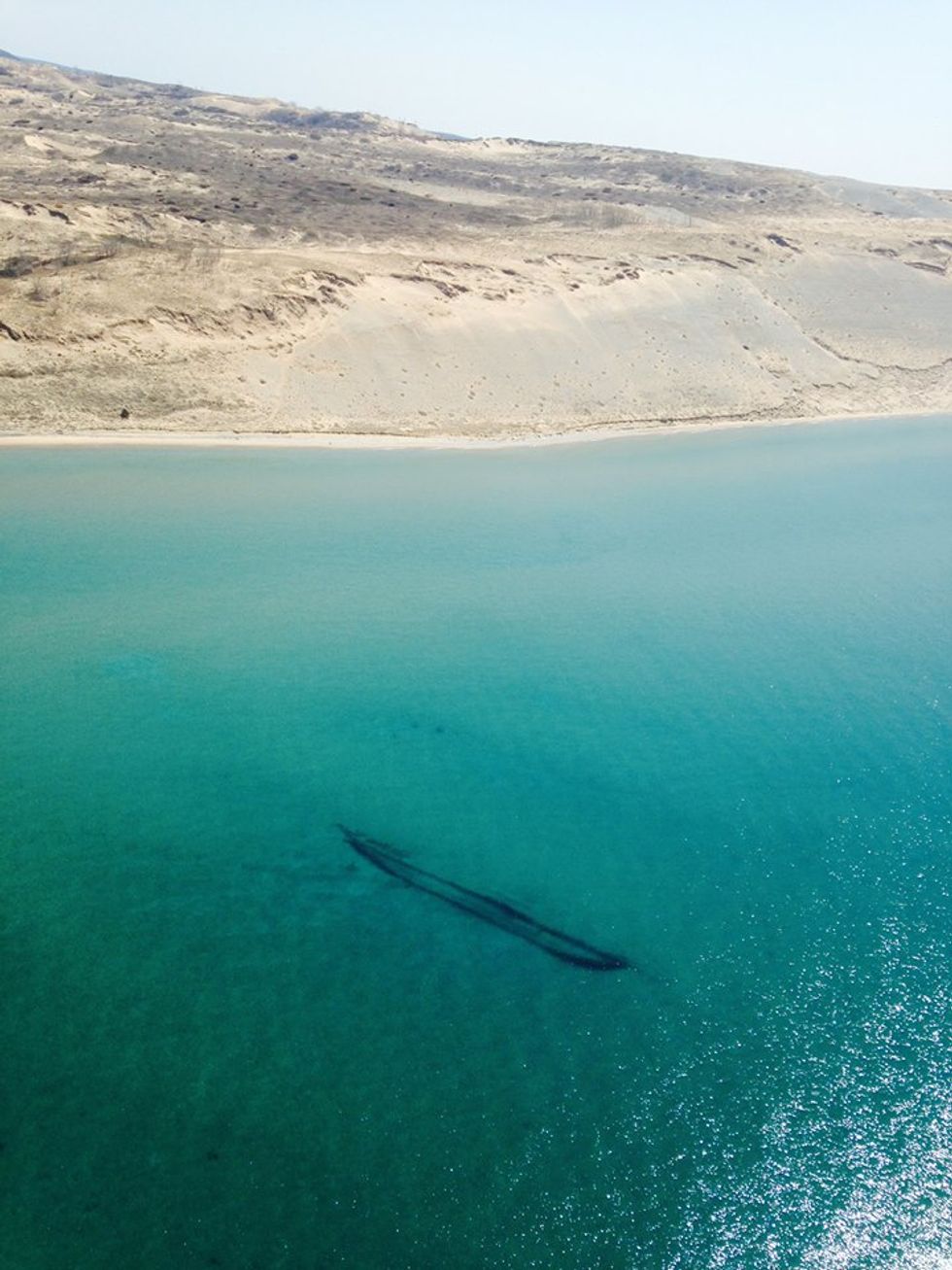
According to the Coast Guard, this ship was
\nThe 121 foot brig James McBride ran aground during a storm on October 19, 1857. Her remains lie in 5 to 15 feet of water near Sleeping Bear Point.\nThe James McBride was built as a brig and measured 121 feet in length with a beam of 25 feet. She was launched April fool’s day 1848. Late in 1848, the McBride sailed to the Atlantic Ocean to pick up a cargo of salt at Turk Island. On her return she stopped at Nova Scotia and added codfish to her manifest. She delivered her cargo to Chicago on December 4, 1848. This trip created a sensation because it was believed to be the first cargo carried direct from the Atlantic to a Lake Michigan port. \n
\nThe 121 foot brig James McBride ran aground during a storm on October 19, 1857. Her remains lie in 5 to 15 feet of water near Sleeping Bear Point.\nThe James McBride was built as a brig and measured 121 feet in length with a beam of 25 feet. She was launched April fool’s day 1848. Late in 1848, the McBride sailed to the Atlantic Ocean to pick up a cargo of salt at Turk Island. On her return she stopped at Nova Scotia and added codfish to her manifest. She delivered her cargo to Chicago on December 4, 1848. This trip created a sensation because it was believed to be the first cargo carried direct from the Atlantic to a Lake Michigan port. \n
 According to the Coast Guard, this ship was brought into shallow water and never got out in 1857. (Image source: U.S. Coast Guard Air Station/Traverse City)
According to the Coast Guard, this ship was brought into shallow water and never got out in 1857. (Image source: U.S. Coast Guard Air Station/Traverse City)
 Here the 133-foot-long "Rising Sun" was sunk on 1917. (Image source: U.S. Coast Guard Air Station Traverse City/Facebook)
Here the 133-foot-long "Rising Sun" was sunk on 1917. (Image source: U.S. Coast Guard Air Station Traverse City/Facebook)
 Image source: U.S. Coast Guard Air Station Traverse City/Facebook
Image source: U.S. Coast Guard Air Station Traverse City/Facebook
 Image source: U.S. Coast Guard Air Station Traverse City/Facebook
Image source: U.S. Coast Guard Air Station Traverse City/Facebook


